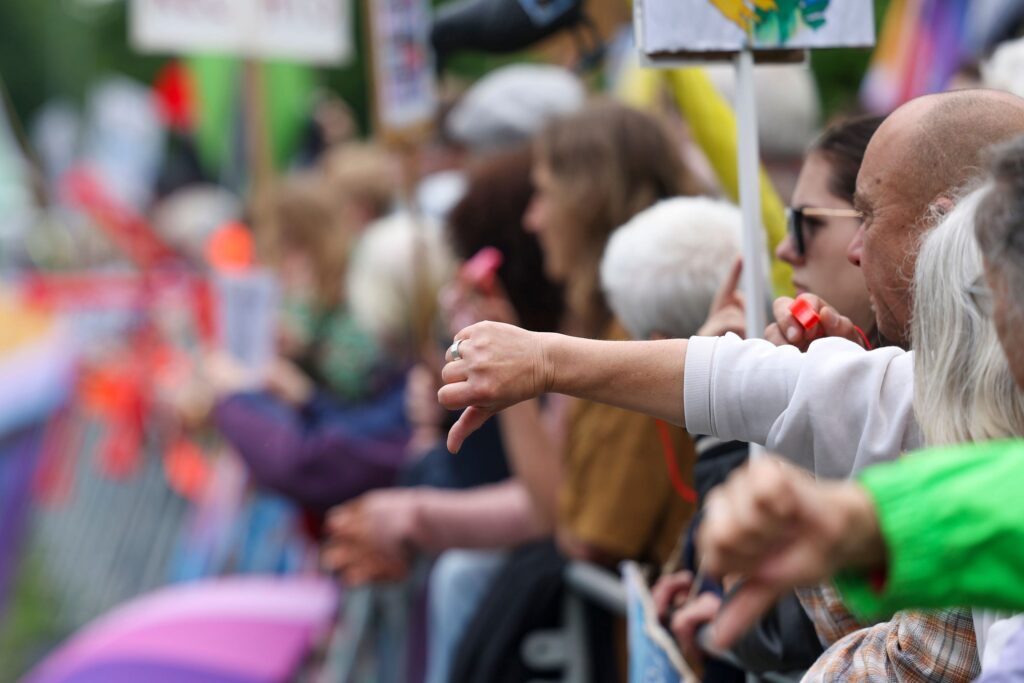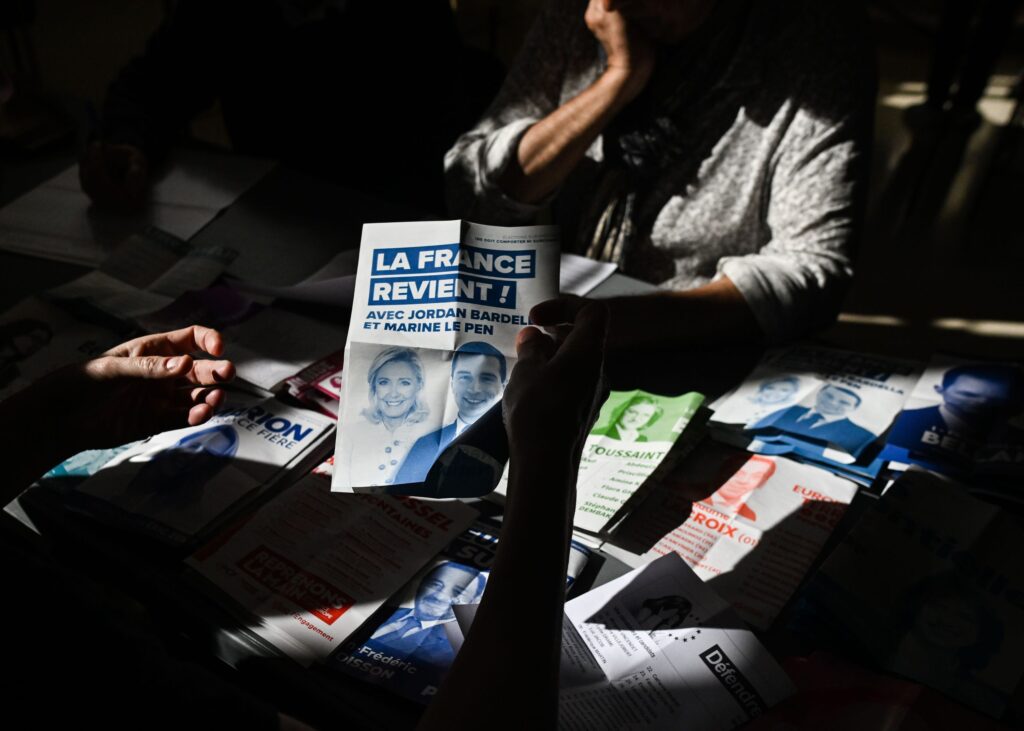Moving Beyond the “Democracy vs. Far Right” Division

2024 is the Super Election Year: most of the world’s population is eligible to vote in (more or less) democratic elections. From India to the US, many of these elections are framed as an existential fight between “democracy” and “the far right”. It is striking how stale this framing has become. For at least a decade now, many elections have been cast as a contest between an embattled center and an emboldened far right—despite the media shying away from using “normative” terms, like “far right” or “racism”, so as to not provoke the now largely normalized far right and its increasingly influential supporters.
The European elections of 6-9 June, a collection of 27 national elections for the same legislative institution, the European Parliament, were framed in these terms. Just as in 2014 and 2019, alarmist accounts predicted massive gains for the far right and some even asked whether this could be the end of Europe, conflating an ill-defined continent (Europe) with a specific political institution (the European Union). In the end, the international media decided on two conclusions: “the center holds” and “the far right surges”—brought together in the dramatic New York Times headline: “In the E.U. Elections, the Center Holds, but the Far Right Still Wreaks Havoc”. While not completely wrong, it obscures more than it highlights.
The problem with this framing is that it assumes a fundamental opposition between “the center” and “the far right” that is no longer true (if it ever was). The term “the center” is extremely vague and, to some extent, meaningless because it is a positional term which shifts whenever the left and/or right poles move. Terms like “center”, “mainstream”, and “moderate” are key to almost every political discussion but lack any objective meaning. They derive their meaning indirectly, from other political actors such as the left and right, the “outsiders” and “newcomers”, the “extremists”. Moreover, while sounding neutral, they are highly normative. The center refers to the good guys, the defenders of democracy, the bulwark against the (bad) “far right” and “populists”.
But in the real world, these distinctions are not so clear, and probably never were. These terms are mostly used to describe the parties that dominate politics. Traditionally, these were mostly parties that were centered between the far left (communism) and far right (fascism), such as the Christian democrats, social democrats, and liberals. But in the 21st century, the far right is part of the group of dominant parties in most European countries, and of course in the US.
After at least two decades of mainstreaming and normalizing the far right, many of their issues, frames, and policies have been adopted by “centrist”parties. Across the political spectrum in most European countries, parties argue that multiculturalism has failed, and that immigration is a threat to national identity and security. The rights of minorities, from LGBTQI+ to Muslims, are weakened or even denied by some mainstream parties. Similarly, an amorphous “anti-woke” discourse, which originated on the far right, now fills the pages of so-called liberal media like The Atlantic and the New York Times. This is not to say that the far right is hegemonic, but rather that the boundaries between the far right and the center are porous at best.
To be clear, as critical scholars, particularly of gender and race, have argued for decades, racism and sexism were never just part of the illiberal forces. Even today, when ideological racism and sexism are largely taboo within the political center, institutional racism and sexism continue to be ignored, if not outright denied. Consequently, the far right often finds common ground with both the mainstream right and the religious right, particularly on so-called culture war issues like gender and sexuality. Hence, the question whether the center holds is not really that important. The real question is—which center holds?
And in this respect, the story is almost always the same. Whenever the center fends off the far right, it does so by coopting far-right actors, discourses, frames, and policies. A perfect example is the right-wing European People’s Party (EPP), which is often called the largest “centrist” group in the European Parliament, and one of the biggest winners in the 2024 European elections. It won the elections largely by opposing immigration and the European Green Deal), positions that it had coopted from the far right. In fact, the EPP mainly argued that they actually solve the “problems” of immigration and the European Green Deal, whereas the far right only shouts from the sideline. This is an argument that many “centrist” parties have argued in national elections in the past decades, including some from the so-called left, like the Danish Social Democrats, In short, these parties no longer compete with the far right in terms of issues, norms, or policies, but solely on competence.

There are more problems with framing every election as an existential choice between “democracy” and the “far right.” One is that it centers the far right, which makes it more important than it is (and should be)—particularly because the far right wins only a modest minority of the votes in most countries. As the far right is portrayed as both the main threat to democracy and the voice of “concerned citizens”, the motivations for their support—whether real (cultural backlash) or mostly imagined (economic anxiety)—are put front and center. This often leads to politicians catering to the potential far-right electorate, who are defined as “the people”, at the expense of the positions and priorities of other citizens, including the most marginalized groups in society. This means a narrowing of the political agenda, emphasizing immigration and culture war battles, at the expense of socio-economic issues, which are at least as important to the majority of the electorate.
Centering the far right also feeds (affective) polarization, as “democracy” is often reduced to “not far right”.In popular terminology, democracy becomes “anti-populism”. But the problem with “anti-populism” is that it uses similar anti-pluralism and moralism as populism, just that this time “the elite” (or “the mainstream”) is good and “the people” (i.e. the far right electorate and its leaders) is evil. This is most visible in two-party systems, which encourage more polarized politics. Just think about the mainstream response to Brexit and Trump, including Hillary Clinton’s infamous denigration of Trump voters as a “basket of deplorables”.
None of this is to say that the far right is not a serious threat to democracy across the world. It is. But it is not the voice of the people! As Larry Bartels has convincingly argued for Europe, and various polls show for the US, the majority of the population does not support the agenda of the far right, not even on immigration. Importantly, electorates have not become more right wing over the years. If anything, populations are becoming more progressive (or, perhaps better, inclusive), because of generational turnover—conservative old people die, replaced by more progressive young people. The far right is not the voice of the silent majority but of the loud minority.
In fact, the far right has never won a majority of the votes in (free and fair) national elections. They have only come to power in two ways: through electoral systems that are disproportionate (Hungary) or even downright undemocratic (US); or through coalitions with mainstream political actors—the so-called Von Papen construction, named after the conservative German politician who helped Adolf Hitler to power in 1933. Even more striking, the far right has mostly come to power by appearing moderate—either by hiding its radical agenda (as was the case with Fidesz in Hungary and PiS in Poland) or because mainstream media and politicians claim that the far right will moderate in power, in part because of “adults in the room” (like with Bolsonaro in Brazil and Trump in the US).
So, what does this all mean? With some exceptions where the far right could really capture power by itself (in India and the US), elections should not be reduced to a struggle between “democracy” and “the far right”. Political parties should instead offer a positive program based on their own priorities and values. This does not mean ignoring the far right electorate or their concerns, but it does mean not centering them. Liberal democrats should not just be vigilant towards far-right parties and politicians but also towards the “political mainstream”. Just because political actors are not far right does not mean that they cannot advance the far-right agenda, through discourse or policies. Similarly, illiberal and even undemocratic policies have also been implemented by mainstream parties—think about anti-terrorism legislation.
The question is not whether the center holds but whether liberal democracy holds. While the far right constitutes the most severe threat to liberal democracy today, not everything the far right does or says is anti-liberal democracy. More importantly, while mainstream parties are the primary defenders of liberal democracy, not everything they do is necessarily good for liberal democracy. Ultimately, liberal democracy cannot be saved with a purely defensive and “anti-populist” agenda. Far-right support is grounded in protest, in disappointment over (perceived) failures of the political mainstream. These voters can only be won back if mainstream parties offer an alternative political program, grounded in their own ideology rather than in simply copying the issues and positions of the far right. Crucially, liberal democratic parties should inspire and empower citizens, rather than just scare them with the threat of “fascism” or disempower them by telling them that “There Is No Alternative” (TINA).
Cas Mudde is the Stanley Wade Shelton UGAF Professor of International Affairs as well as a Distinguished Research Professor at the University of Georgia. He is a columnist for Aftonbladet and a regular contributor to Guardian and VoxEurop. Among his recent publications are The Far Right Today (2019) and (with Cristóbal Rovira Kaltwasser) Populism: A Very Short Introduction (2017). He tweets at @casmudde.


